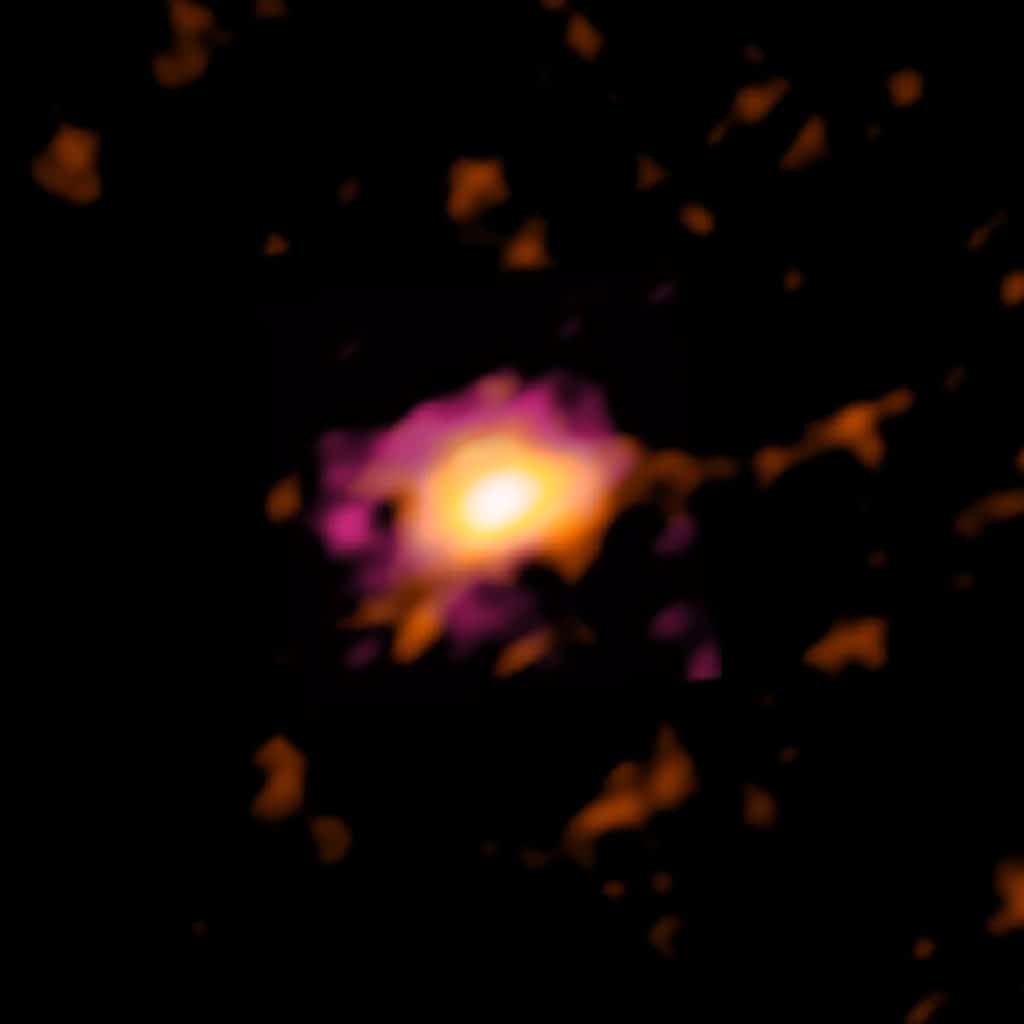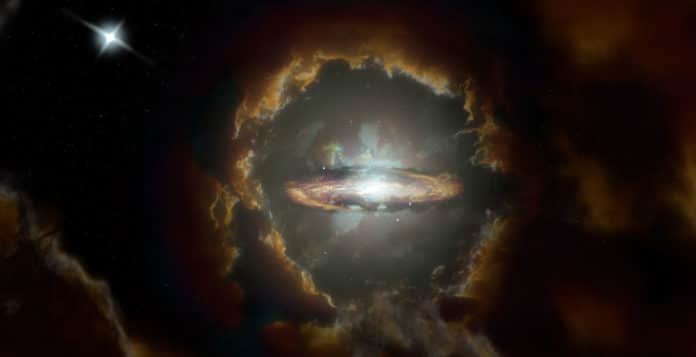Atacama Large Millimeter/submillimeter Array (ALMA) discovered a massive rotating disk galaxy when the universe was only ten percent of its current age, challenges the traditional models of galaxy formation.
Dubbed as DLA0817g, the galaxy is the most distant rotating disk galaxy ever observed. The unparalleled intensity of ALMA made it conceivable to see this galaxy spinning at 170 miles (272 kilometers) per second, like our Milky Way.
Lead author Marcel Neeleman of the Max Planck Institute for Astronomy in Heidelberg, Germany said, “While previous studies hinted at the existence of these early rotating gas-rich disk galaxies, thanks to ALMA we now have unambiguous evidence that they occur as early as 1.5 billion years after the Big Bang.”
“The discovery of the Wolfe Disk provides a challenge for many galaxy formation simulations, which predict that massive galaxies at this point in the evolution of the cosmos grew through many mergers of smaller galaxies and hot clumps of gas.”
“Most galaxies that we find early in the universe look like train wrecks because they underwent consistently and often ‘violent’ merging. These hot mergers make it challenging to form well-ordered, cold rotating disks as we observe in our present universe.”
J. Xavier Prochaska, of the University of California, Santa Cruz, and co-author of the paper, said, “We think the Wolfe Disk has grown primarily through the steady accretion of cold gas. Still, one of the questions that remains is how to assemble such a large gas mass while maintaining a relatively stable, rotating disk.”

Using the National Science Foundation’s Karl G. Jansky Very Large Array (VLA) and the NASA/ESA Hubble Space Telescope, scientists learned more about star formation in the Wolfe Disk.
ALMA observed the galaxy’s movements and mass of atomic gas and dust in radio wavelengths. On the other hand, the VLA measured the amount of molecular mass—the fuel for star formation. In UV-light, Hubble observed massive stars.
Prochaska said, “The star formation rate in the Wolfe Disk is at least ten times higher than in our galaxy. It must be one of the most productive disk galaxies in the early universe.”
This rotating disk was initially discovered in 2017. Scientists found this galaxy when they detected light from a more distant quasar.
The light from the quasar was assimilated as it went through an enormous reservoir of hydrogen gas encompassing the galaxy, which is the way it uncovered itself. Instead of searching for direct light from too bright, yet increasingly peculiar galaxies, astronomers utilized this ‘absorption’ strategy to discover fainter and more ‘normal’ galaxies in the early universe.
Neeleman said, “The fact that we found the Wolfe Disk using this method tells us that it belongs to the normal population of galaxies present at early times. When our newest observations with ALMA surprisingly showed that it is rotating, we realized that early rotating disk galaxies are not as rare as we thought and that there should be a lot more of them out there.”
Credit: NRAO/AUI/NSF, S. Dagnello
Joe Pesce, an astronomy program director at the National Science Foundation, which funds the telescope, said, “This observation epitomizes how our understanding of the universe is enhanced with the advanced sensitivity that ALMA brings to radio astronomy. ALMA allows us to make new, unexpected findings with almost every observation.”
Journal Reference:
- Marcel Neeleman, A cold, massive, rotating disk galaxy 1.5 billion years after the Big Bang. DOI: 10.1038/s41586-020-2276-y
